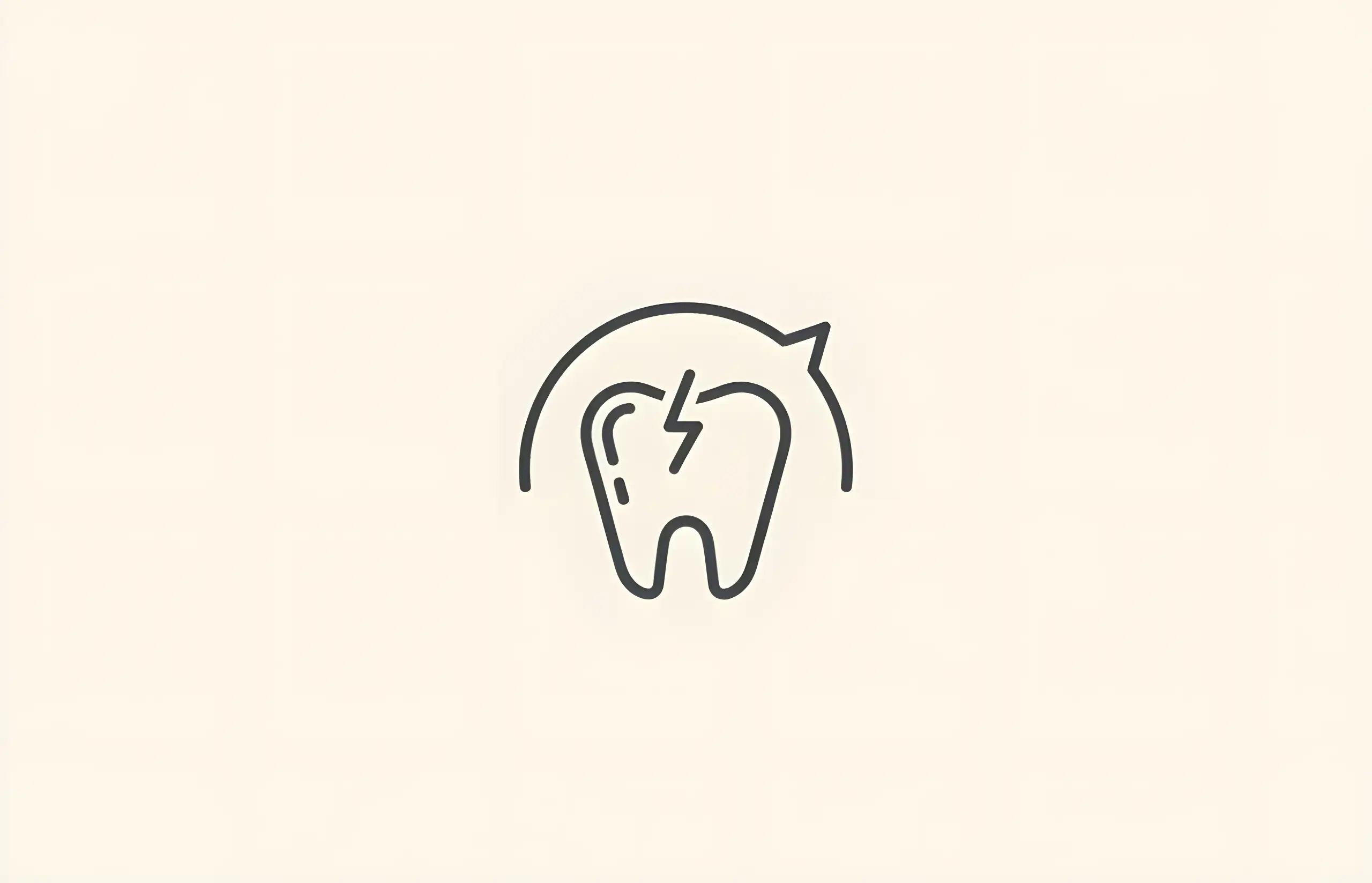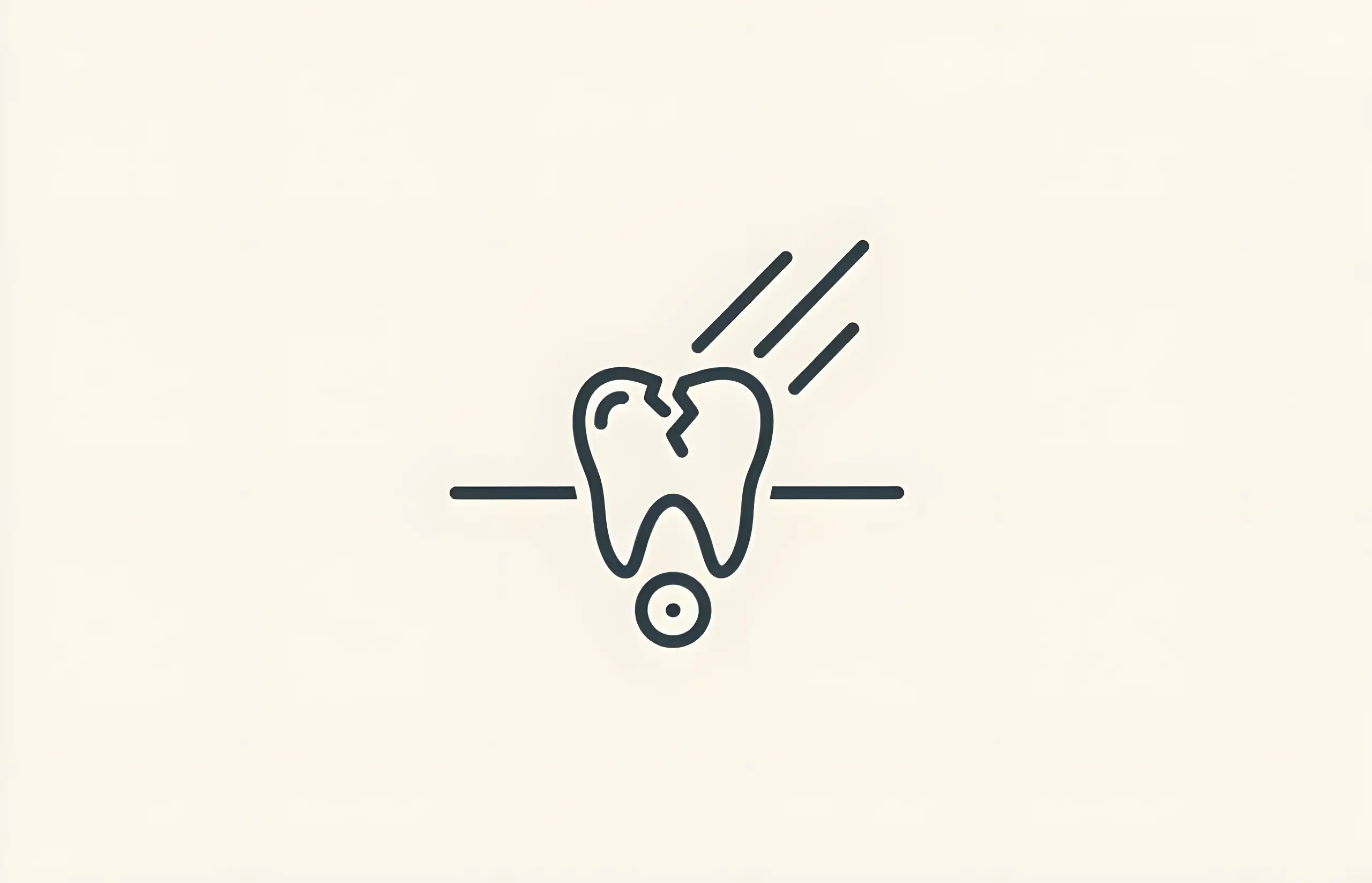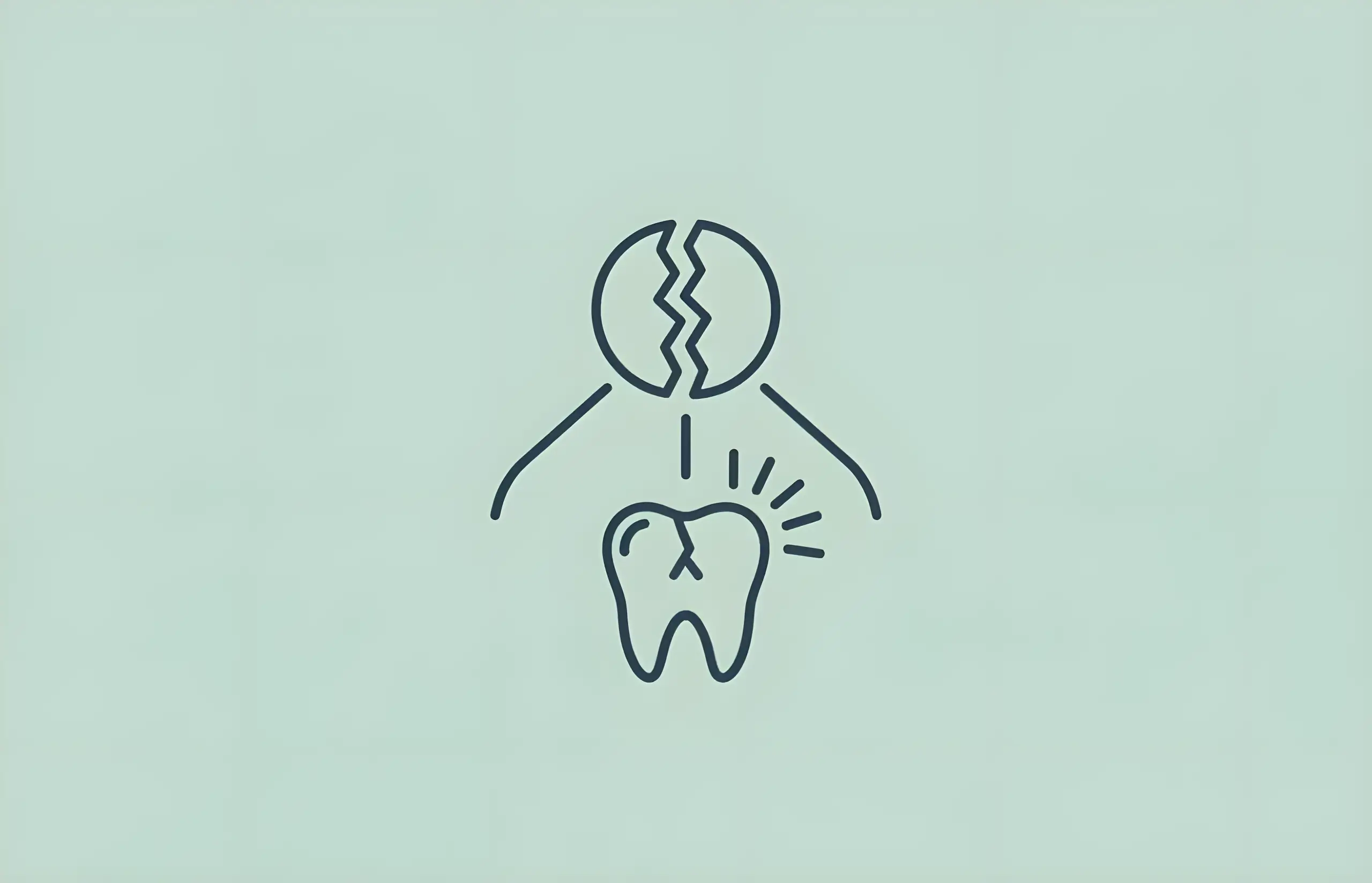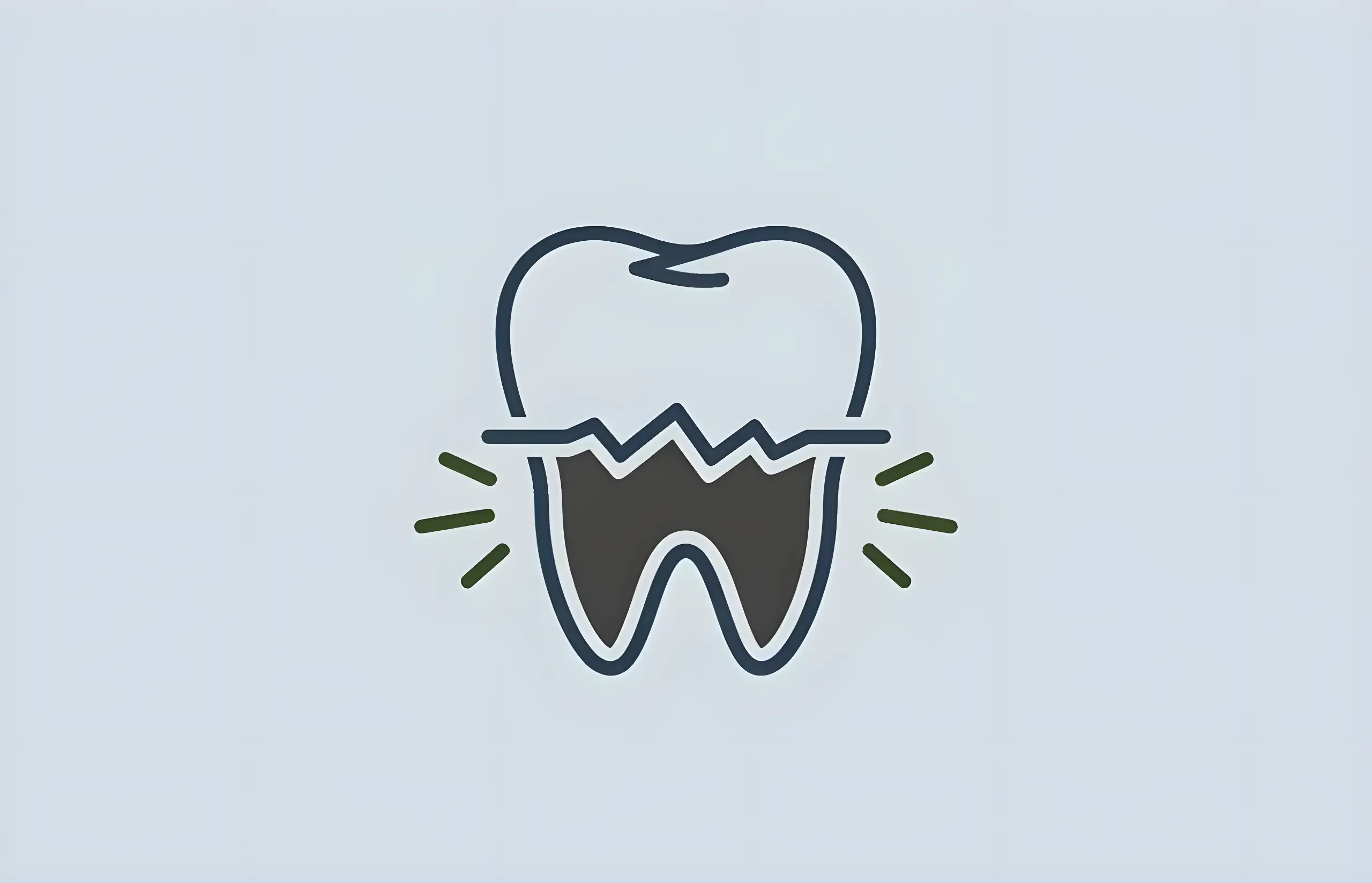If you hear a friend or a family member scream in panic, "My tooth broke in half and it's black inside!" you need not panic. It is not uncommon to notice that when you are chewing on something hard like candy, there is an odd piece in your mouth that sticks out. It has no flavour, and it does not dissolve. And for some reason, you can't just ignore it.
That, my friend, is sometimes a chipped or broken tooth. The enamel on your teeth is pretty hard, but if you fall or bite on something hard, you might have to deal with a chipped tooth, especially if you have some amount of decay there. But if you get yourself to a dentist, it might all be fine.
What Causes Teeth to Break?
Sometimes, a cracked tooth is the result of grinding your teeth or eating particularly hard foods, and it can also happen naturally with age. But there are some other reasons like:
- Large fillings that disrupt the integrity of your teeth.
- Hitting your mouth during an accident or a fall.
- An abrupt change in the temperature of your mouth like drinking ice water right after eating something really hot.
Why Is the Inside of Your Tooth Black?
Obviously, if your tooth broke in half and is black inside, something is wrong because that is not what healthy teeth look like. That is a sign of damage like tooth decay or staining.
This happens when bacteria in the mouth starts to erode the enamel. When it is left untreated, this can damage the inner layer. Once the damage reaches the pulp of your tooth, you will experience toothache, which will worsen along with the decay.
If the bacteria managed to completely eat through the dentin layer, the blood vessels and nerves in the pulp of your tooth will become discoloured. If the pulp is inflamed, the situation is called pulpitis, and typically makes teeth more sensitive to hot and cold food or drinks. This can be due to the decaying teeth or trauma to the tooth, which affects the blood supply.
If the blood vessels and nerves in the tooth have died, the situation has worsened, and it is called pulp necrosis. In that case, your teeth will be insensitive to temperature.
Sometimes, this discolouration is not due to tooth decay but because of staining. In some cases, it is on the outside due to the consumption of dark-coloured foods like black tea – these are called extrinsic stains. If the discolouration is in the deeper layers of the teeth, they are called intrinsic stains. These stains occur when dark materials enter the outer layer of the tooth and typically occur when teeth are being formed. It can also happen because of the use of some antibiotics like tetracycline in children.
The black colour in a tooth could also be the result of an old dental filling like mercury which turns black after a while.
What Should You Do in This Situation?
If your tooth broke in half and it's black inside, you absolutely must go to a dentist. In fact, head there even if it is not discoloured. If one is not available, you must head to the nearest emergency room.
The treatment depends on the size and location of the crack. The dentist will also take other symptoms into account and check if the damage reaches the gum line too. Your dentist might suggest bonding wherein plastic resin is used to fill the crack and restore the tooth's functionality.
Another option is to get a crown made of porcelain or ceramic placed. This will stop the damage, but the process may take a couple of weeks. However, some dentists are capable of making a porcelain crown right away in the office and place it on the same day. If you take good care of the crown, it can last a very long time.
If the damage has spread to the pulp of your teeth, you might have to get a root canal. This process is to remove the damaged pulp and build back the integrity of the affected tooth.
If there is so much damage that the nerves and roots of the tooth are in danger, your dentist might want to remove the tooth. A lot of people actually have hairline fractures in their enamel. If it does not make any difference, you can go without needing any treatment. But if there is pain or a change in the way your teeth look, there's trouble.
Parting Words
Teeth are white in colour, and that is how they should be. If you see any level of discolouration, especially on the inside of a tooth when you chip or break one, you must find a dentist right away. It could be nothing, but do you really want to risk it?
Sources and References
-
[1]
Pulp necrosis and crown discoloration: a systematic review and meta-analysisEuropean Archives of Paediatric Dentistryhttps://pubmed.ncbi.nlm.nih.gov/29896799/
-
[2]
Symptomatic irreversible pulpitis and other orofacial pain: overcoming challenges in diagnosis and managementPrimary Dental Journalhttps://pmc.ncbi.nlm.nih.gov/articles/PMC11991903/
-
[3]
Treatment of cracked teeth: A comprehensive narrative reviewClinical and Experimental Dental Researchhttps://pmc.ncbi.nlm.nih.gov/articles/PMC9562569/
-
[4]
The Use of Dental Crowns for Endodontically Treated Teeth: A Review of the Clinical EffectivenessNCBI Bookshelf - Canadian Agency for Drugs and Technologies in Healthhttps://www.ncbi.nlm.nih.gov/books/NBK304710/
-
[5]
Drug-induced tooth discoloration: An analysis of the US food and drug administration adverse event reporting systemFrontiers in Pharmacologyhttps://pmc.ncbi.nlm.nih.gov/articles/PMC10133538/
All sources accessed and verified on . Medical information reviewed for accuracy and compliance with current guidelines.
Related Articles

My Back Tooth Hurts When I Chew – What Could It Be?
Comprehensive guide to understanding why your back tooth hurts when chewing, including common causes from cavities to wisdom teeth and when to see a dentist

Dental Bonding – Costs and Information
Comprehensive guide to dental bonding procedures, including composite bonding, adhesive bonding, treatment process, and costs ranging from £90 to £800 depending on the type of bonding

Dental Crowns – Costs & Information
Comprehensive guide to dental crowns including types (metal, porcelain, ceramic, zirconia), procedure steps, survival rates, longevity studies, costs in the UK, and comparison of materials

Flexible Partial Dentures
How Much Do They Cost in the UK? (100% Patient Preference, £600-£1,500 Range)

What to Do When Your Tooth Is Broken off at the Gumline
Emergency Management and Treatment Options for Gumline Tooth Fractures (97.8% Success at 1 Year)

What Causes Tooth Pain after Biting a Hard Object?
Comprehensive guide to tooth pain causes including bruised ligament, high restorations, cavities, cracked teeth, and gum infections, with diagnostic approaches and treatment options
About The Dental Guide
The Dental Guide is a trusted online resource providing evidence-based information about dental health, treatments, and procedures. Our content is created and reviewed by qualified dental professionals to help you make informed decisions about your oral health.
Our Mission
- Evidence-based dental information
- Expert-reviewed content
- Clear, accessible explanations
- Latest treatment options
- Patient-focused guidance
Editorial Standards
- GDC-registered dental professionals
- Peer-reviewed sources
- Regular content updates
- Medical accuracy verification
- Transparent authorship
Important Notice
The information on The Dental Guide is for educational purposes only and should not replace professional dental advice. Always consult with a qualified dentist for diagnosis and treatment recommendations tailored to your individual needs and circumstances.
Medically Reviewed
Reviewed by Dr. Nasim Mechoui , BDS (Bristol)
Share this article
Comments & Discussion
Have questions about dental implants? Share your thoughts or experiences.
